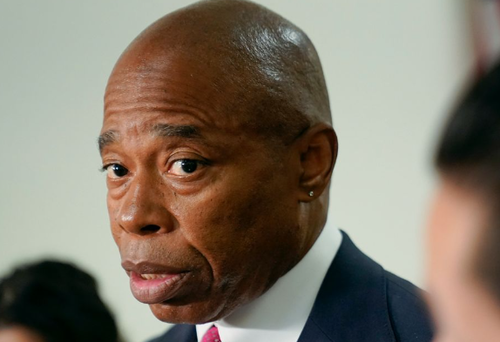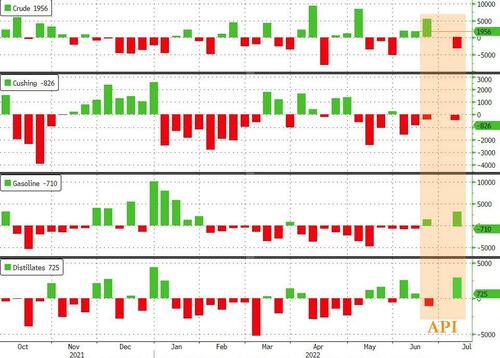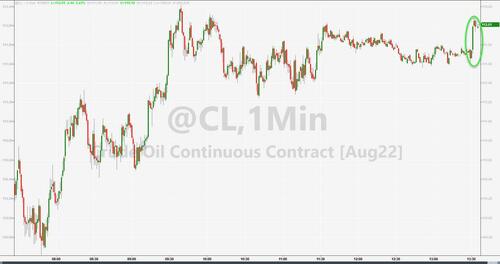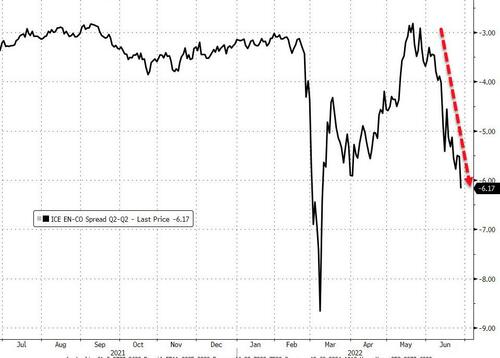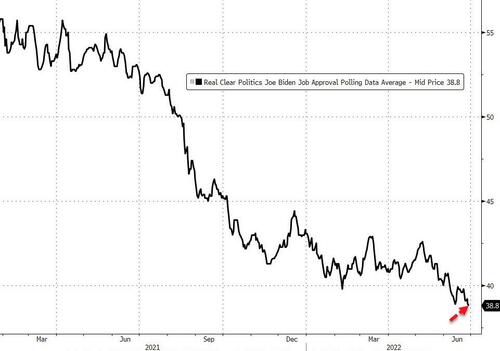Authored by Frank Shostak via The Epoch Times,
Currently the world is on a fiat money standard – a government-issued currency that is not backed by a commodity such as gold.
The fiat standard is the primary cause behind the present economic instability, and is tempted to suggest that a gold standard would reduce instability. The majority of experts however, oppose this idea on the ground that the gold standard is in fact a factor of instability.

For instance, the former Federal Reserve Board chairman Ben Bernanke echoed this opposition in his lecture at the George Washington University on March 20, 2012. According to Bernanke, the gold standard prevents the central bank from engaging in policies aimed at stabilizing the economy on account of sudden shocks. This, in turn, according to Bernanke, could lead to severe economic upheavals:
Since the gold standard determines the money supply, there’s not much scope for the central bank to use monetary policy to stabilize the economy…. Because you had a gold standard which tied the money supply to gold, there was no flexibility for the central bank to lower interest rates in recession or raise interest rates in an inflation.
A great merit of the gold standard is that it prevents authorities from pursuing reckless money pumping. Also, in his speech, Bernanke argued that because of the relatively low growth rate in the supply of gold, this could lead to a general decline in the prices of goods and services, which could seriously damage the economy.
What matters is not the growth rate of money as such but its purchasing power. With an expansion in wealth all other things being equal, the purchasing power of dollars is going to increase and every holder of dollars is going to command more wealth.
Bernanke also argued that another major negative of having the gold standard is that it creates a system of fixed exchange rates between the currencies of countries that are on the gold standard. There is no variability as we have it today, argued Bernanke:
If there are shocks or changes in the money supply in one country and perhaps even a bad set of policies, other countries that are tied to the currency of that country will also experience some of the effects of that.
It seems that Bernanke was arguing in support of the floating currency system. He doesn’t understand that in a free market, money is a commodity, and a dollar or other currencies are not independent entities.
Prior to 1933, the name “dollar” was used to refer to a unit of gold that had a weight of 23.22 grains. Since there are 480 grains in one ounce, this means that the name dollar also stood for 0.04838 ounce of gold. This in turn means that one ounce of gold referred to $20.67. Please note that $20.67 is not the price of one ounce of gold in terms of dollars as Bernanke and other experts are saying. Dollar is just a name for 0.04838 ounce of gold. According to Murray N. Rothbard,
No one prints dollars on the purely free market because there are, in fact, no dollars; there are only commodities, such as wheat, cars, and gold.
Likewise, the names of other currencies stood for a fixed amount of gold. Contrary to Bernanke, in a free market, currencies do not float against each other. They are exchanged in accordance with a fixed definition. For example, if the British pound stands for 0.25 ounces of gold and the dollar stands for 0.048 ounces of gold, then one British pound will be exchanged for around five dollars, as Rothbard showed.
Increases in the Gold Supply Don’t Cause Boom-Bust Cycles
According to Rothbard, increases in the supply of gold do not set boom-bust cycles into motion. For Rothbard the key reason behind boom-bust cycles is the act of embezzlement brought about by the monetary policies of the central bank.
Rothbard believed that the business cycle is unlikely to emerge in a free-market economy where money is gold and there is no central bank. According to Rothbard,
Inflation, in this work, is explicitly defined to exclude increases in the stock of specie. While these increases have such similar effects as raising the prices of goods, they also differ sharply in other effects: (a) simple increases in specie do not constitute an intervention in the free market, penalizing one group and subsidizing another; and (b) they do not lead to the processes of the business cycle. (bold added)
To better explain this point, we begin with a barter economy in which John the miner produces ten ounces of gold. The reason why he mines gold is because there is a market for it. John then exchanges his ten ounces of gold for various goods and services.
Over time, individuals have discovered that gold—being originally useful in making jewelry—is also useful for other uses such as to serve as the medium of the exchange. They now begin to assign a much greater exchange value to gold than before. As a result, John the miner can exchange his ten ounces of gold for more goods and services than before.
Observe that gold is part of the pool of wealth and promotes the individual’s life and well-being. Every time John the miner exchanges gold for goods, he is engaging in an exchange of something for something. He is exchanging wealth for wealth.
Contrast this with the paper receipts that are employed as the medium of exchange. These receipts are issued without the corresponding gold deposited for safekeeping. This sets a platform for consumption without contributing to the pool of wealth.
The printing of receipts unbacked by gold sets the exchange of nothing for something. This in turn sets in motion the process of the diversion of resources from wealth-generating activities to the holders of unbacked receipts. This leads to the so-called economic boom.
Stopping the issuing of unbacked receipts arrests the diversion of resources towards activities that emerged because of unbacked by gold receipts. As a result, non-wealth-generating activities come under pressure—an economic bust emerges.
To clarify this point further, consider counterfeit money generated by a forger. No goods were exchanged to obtain the forged money. (The forger just printed the money hence the counterfeit money emerged out of “thin air.”) Once the forged money is exchanged for goods, this results in nothing being exchanged for something, leading to the channeling of goods from individuals that produced goods to the forger.
Now, a forger by embarking on the purchases of various goods provides in fact support for the production of these goods. Observe that the increase in the production of goods would not emerge in the absence of the counterfeit money. Resources are now directed towards the production of goods that are supported by the counterfeiter.
Once the support for goods emerging on account of counterfeiter activities slows down, or comes to a halt, the demand for these goods also slows down or vanishes. Consequently, the production of these goods slows down or is aborted. Observe that on account of the increase in the money with no backing, an increase in the production of goods emerges. A decline in the money created from nothing results in the decline in the production of these goods. Hence, what we have here is a boom of activities that emerged as a result of money out of “thin air” and their bust because of a decline in the supply of unbacked money.
While increases in the supply of gold (when used as money) are likely to cause fluctuations in economic activity, these fluctuations do not occur because of intervention with the free market. Thus, these fluctuations do not cause the impoverishment of wealth generators. A gold miner (wealth producer) exchanges gold for other useful goods. He does not require empty money to divert wealth to himself.
Summary and Conclusion
Boom-bust cycles are the outcome of central bank policies that are aimed at stabilizing the economy. In the past the alleged instability of economies on the gold standard took place because the authorities were issuing unbacked by gold money thereby undermining the gold standard. Contrary to popular thinking, the gold standard, if not abused by the central bank, does not cause instability.



